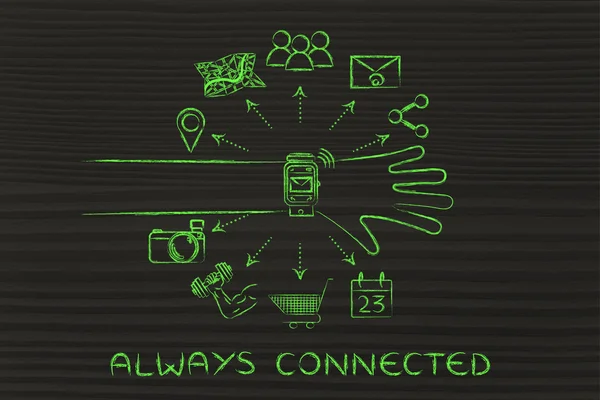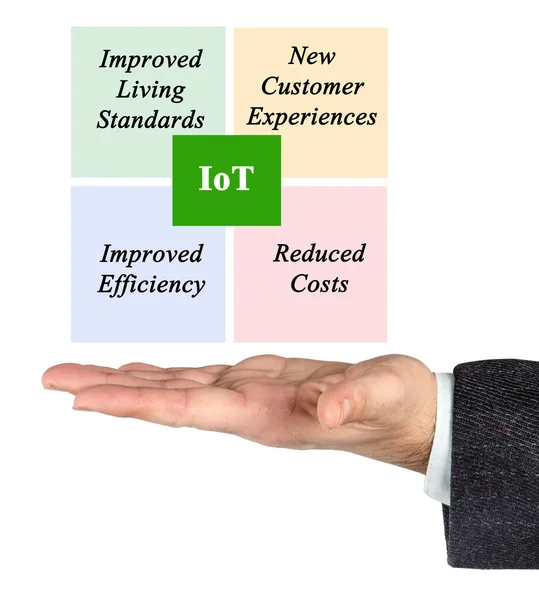Building brand loyalty is a pivotal strategy for businesses thriving in today’s hyper-competitive market landscape. The integration of the Internet of Things (IoT) into consumer interactions presents a novel avenue for companies to enhance their relationship with customers.
The Internet of Things (IoT) represents a significant evolution in the way we interact with the world around us. By enabling devices to communicate and operate with minimal human intervention, IoT has transformed numerous aspects of daily life and business operations. In the context of brand loyalty, this technological revolution offers unique opportunities to deepen connections with consumers. Given the fierce competition across various sectors, fostering brand loyalty is not just beneficial but essential for survival and growth. This article explores the potential of IoT interactions in building and enhancing brand loyalty.
How IoT Shapes Brand Loyalty and Consumer Behavior
IoT encompasses a wide range of devices, from wearable technology and smart home gadgets to connected vehicles and beyond. These devices collect and exchange data, providing insights into user behaviors and preferences. Brand loyalty, in contrast, refers to a consumer’s preference for a particular brand, demonstrated through repeated purchases and positive advocacy. This loyalty is not just rooted in the quality of a product or service but is also significantly influenced by the customer experience. The relationship between technology and consumer behavior is thus crucial, as technological advancements can reshape how consumers perceive and interact with brands.
The Mechanisms of IoT in Enhancing Brand Loyalty
The Internet of Things (IoT) is a transformative force in enhancing brand loyalty, providing a multifaceted approach to deepening customer relationships through technology. By integrating IoT into their operations, brands can leverage several mechanisms to not only meet but exceed customer expectations, fostering loyalty in an increasingly competitive landscape.
Personalization
At the heart of IoT’s impact on brand loyalty is personalization. IoT devices, through their constant data collection and communication capabilities, offer a treasure trove of insights into individual consumer behaviors, preferences, and needs. This data enables brands to tailor their offerings and communications to match the specific desires of each customer. For instance, a smart thermostat could learn a user’s preferred temperature settings throughout the day and adjust automatically, enhancing comfort without any manual input. Similarly, a fitness tracker could provide personalized workout and nutrition tips based on the user’s activity levels and goals.
Such customization makes consumers feel uniquely valued and understood, establishing a strong emotional bond with the brand. This personalized experience is not just about meeting needs but anticipating them, creating a sense of loyalty that is difficult for competitors to disrupt.

Convenience
IoT’s ability to streamline and automate interactions brings unparalleled convenience to consumers, significantly enhancing the customer experience. This convenience is manifested in various forms, from smart home devices that allow users to control their environment with voice commands to wearable technology that seamlessly integrates health monitoring into daily life. By removing friction points and making interactions more efficient, IoT enables brands to offer services that fit effortlessly into the lives of consumers.
This ease of use and efficiency not only improves the immediate experience of the product or service but also builds a lasting impression of the brand as attentive and user-friendly, contributing to a deeper sense of loyalty.
Engagement
Engagement through IoT goes beyond traditional interactive experiences by incorporating elements of real-time feedback and control, making the consumer experience more dynamic and immersive. For example, a gaming console that adjusts game difficulty based on the player’s heart rate or a retail app that offers augmented reality (AR) previews of furniture in a customer’s home. These engaging experiences are not just novel but create a memorable interaction that consumers associate with the brand.
This level of engagement, facilitated by IoT, allows brands to connect with consumers on an emotional level, fostering a sense of belonging and loyalty. The unique and interactive experiences delivered through IoT devices can transform a mundane activity into an enjoyable and engaging moment, deepening the consumer’s connection with the brand.
Feedback and Improvement
Perhaps one of the most significant advantages of IoT for brand loyalty is the continuous loop of feedback and improvement it facilitates. IoT devices generate a vast amount of data on how products are used, when they’re used, and even potential issues consumers might face. By analyzing this data, brands can identify trends, anticipate market shifts, and refine their offerings to meet consumer needs better.
This mechanism for continuous improvement demonstrates to consumers that a brand is committed to excellence and responsive to their feedback, enhancing trust and loyalty. Moreover, the ability to quickly adapt and improve products or services based on real-time data ensures that brands can stay ahead of consumer expectations, maintaining a competitive edge.
Strategies for Building Brand Loyalty Through IoT
Strategies for building brand loyalty through IoT interactions involve delving deeper into how technology can be harnessed to create a more engaging, responsive, and personalized customer experience. The goal of these strategies is not just to leverage technology for its own sake but to use it as a tool for cultivating deeper, more meaningful relationships with consumers.

Developing a Seamless Omnichannel Experience
In today’s digital age, consumers interact with brands through multiple channels: online stores, mobile apps, social media, and smart devices, among others. A seamless omnichannel experience ensures that no matter how or where a customer interacts with a brand, the experience is consistent and fluid. Integrating IoT into this mix means that smart devices can seamlessly connect with other channels, offering personalized experiences at every touchpoint.
For instance, a smart refrigerator could remind a customer to reorder their favorite brand of milk before running out, and with a simple voice command, place the order through the brand’s online store. This level of integration across devices and platforms can significantly enhance the customer experience, making brand interactions more convenient and enjoyable, and thereby fostering loyalty.
Enhancing Customer Service
IoT offers unprecedented opportunities to enhance customer service by providing brands with real-time data about how customers use products and services. This data allows brands to anticipate needs, troubleshoot problems before they become inconveniences, and offer personalized assistance.
Imagine a wearable fitness tracker that not only monitors health metrics but also provides real-time tips and advice, or even alerts the user to potential health issues before they require medical attention. Such proactive customer service can transform the user experience, making the brand indispensable to the customer’s daily routine and thus deepening loyalty.
Creating Value-Added Services
IoT enables brands to create additional layers of service that complement the primary offering, adding significant value for the consumer. These value-added services can differentiate a brand in a crowded market, making its products and services more attractive and sticky.
A car manufacturer, for example, could offer a subscription-based service that uses data from the vehicle’s IoT sensors to provide regular maintenance updates, driving tips to improve fuel efficiency or automatic emergency calls in case of an accident. These services not only enhance the overall value of the vehicle but also create continuous engagement with the brand, reinforcing loyalty.
Implementing Loyalty Programs
Traditional loyalty programs offer rewards based on purchase history, but IoT opens the door to far more personalized and engaging programs. By integrating loyalty programs with IoT devices, brands can offer rewards that are not just based on transactions but also on how customers interact with their products and services.
For example, a smart home brand could offer points not just for purchases but for achieving certain milestones with their products (e.g., energy savings milestones with a smart thermostat). These personalized rewards make the loyalty program more engaging and relevant to the customer’s lifestyle, enhancing the sense of loyalty and attachment to the brand.
Wrapping Up
The integration of IoT in consumer interactions presents a promising frontier for building brand loyalty. By offering personalized, convenient, and engaging experiences, and by utilizing data for continuous improvement, brands can foster a deeper connection with their consumers. The strategies outlined above highlight the multi-faceted approach required to leverage IoT for brand loyalty effectively.
As technology continues to evolve, so too will how brands interact with their customers. The future of brand loyalty will increasingly depend on how well companies can adapt to and incorporate technological advancements like IoT into their customer engagement strategies. The evolving landscape of consumer-brand interactions through technology not only promises to enhance the consumer experience but also to redefine the very essence of brand loyalty in the digital age.
Meet the Author
Tomas Buglio is known for his attention to detail and his ability to understand complex data and turn it into actionable recommendations. He has worked with various companies and industries, including healthcare, technology, and consumer goods, to conduct research and provide valuable insights.

Leave a Reply